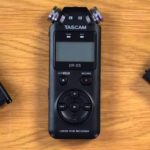Did you know that the volume you listen to music at can have a profound effect on how you perceive the different frequencies of that music, eg the bass, mid and treble? And that there’s actually a specific volume level that is the “right” level, where we hear all of the frequencies as they really are?
Far from being esoteric theory, this stuff is actually hugely important for DJs and DJ/producers, because it means that if we want to hear our music as it really is, not only do we have to listen to it through decent, well-positioned speakers in a room that sounds good, but we have to do so at the right volume, too.
Watch the show
Prefer me to talk you through this? In this video, a recording of a live show from the Digital DJ Tips YouTube channel, I talk you through everything in this article, and we take questions from our community too on the subject.
What is the right volume?
Turns out that 85dB is the volume where the human brain hears audio “neutrally” – just how it actually is. So while nobody’s saying you should always record your DJ mixes or work on your productions with the volume set at 85dB, you certainly should listen periodically to any DJ mixes or productions you’re working on at this level.
This way, you’ll be able to to check all the low, mid and high frequencies are working nicely together, and be more confident that when somebody else hears your DJ mix or production on their sound system, it’ll sound as you intended, it – not too tinny or bass heavy, for example.
Read this next: 5 Tips For A Great-Sounding DJ/Producer Home Studio
How can you set your music there?
So if it’s important to listen through a DJ mix or production you’re working on at 85dB, how do you check and change your volume accordingly? Turns out that there are two ways, one of which you probably won’t have to pay a penny for. Here they are:
- Buy a cheap SPL meter – An SPL (or “Sound Pressure Level”) meter is the type that the fun police sometimes use at venues or festivals to get DJs to turn things down. You can pick one up from Amazon, for instance, for around $18-$50 (this one is the cheaper end of the range)
- Use a smartphone app – As your smartphone has a mic, no surprise that there are apps to attempt an SPL measurement for those, too. These may well not be quite as accurate as a dedicated meter, but some are pretty close, depending on the phone you have. Check out your iOS or Android app store (search “SPL meter”); for iOS, we’ve heard good things about the NIOSH Sound Level Meter
Finally…
If you’re interested in the science behind this, search for “Fletcher Munson equal loudness contours” on Google to learn how the boffins arrived at this conclusion – or alternatively, just implement the above and see if it gives you any insights next time you’re working on a DJ mix or producing a track.
Start making great-sounding music: Laidback Luke’s Bootlegs, Mashups & Re-edits Course
Again, it’s important to note that you don’t have to have the volume set there all the time, but any tools that help us to share music that sounds better for more people, more of the time, have to be worth our investigating as serious DJs and DJ/producers, right?
We’d love to know what you think or how you get on with this, so please feel free to share in the comments.







